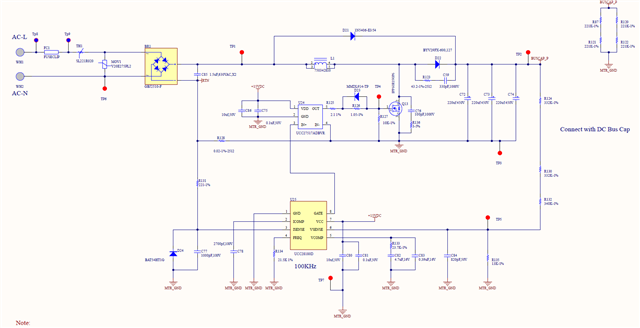Tool/software:
Hi guys,
I used UCC28180D and gate driver UCC27517ADBVR to design a PFC and output is 390V following the design reference 900W TIDA-00443 for our 230V motor drive project. The load is BLDC pump, max power is around 650W. The output voltage is around 393V. After running the pump for about 10 minutes, the current resistor 20m ohm burnout. check the Mosfet is bad( D, G, and S all short together). The fuse and bridge are both good. The gate driver is bad( the 15V and GND short together). What i believed is that the mosfet is short and the current is too large and burned out the current sensing resistor and some of the trace. The question is what caused the gate driver short the VCC and GND? please provide some help.



